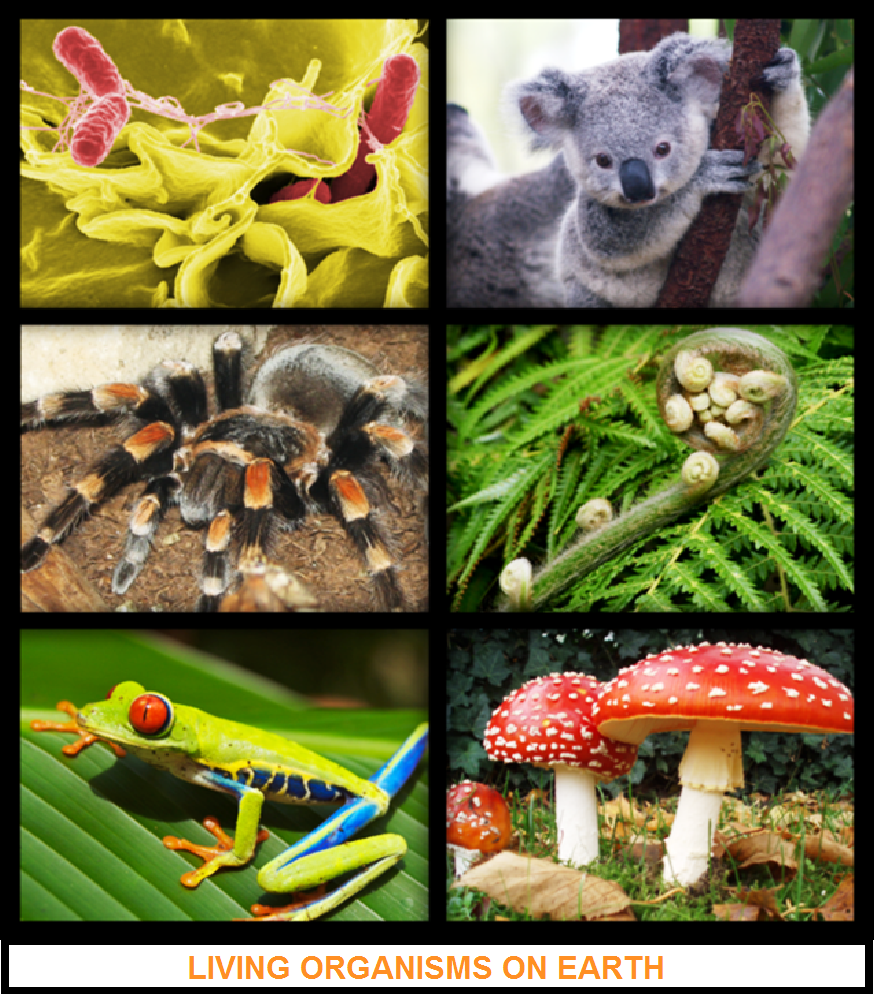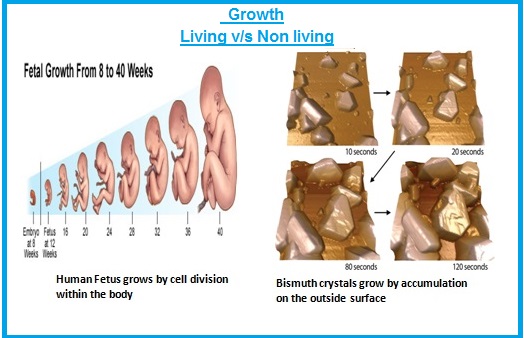The Definition of Living

`color{blue} ul(mathtt ("Living Organisms"))` : Living organisms are self-replicating, evolving and self-regulating interactive systems capable of responding to external stimuli.
`\color{green} ✍️ \color{green} \mathbf(KEY \ CONCEPT)`

● Conventionally, the definition of living includes those distinctive characteristics that are exhibited only by living organisms. Such characteristics distinguish the living from the non living.
●The basic characteristics involve growth, reproduction, ability to sense environment and mount a suitable response.
● Additional characteristics include metabolism, ability to self-replicate, self-organise, interact with each other and the environment and emergence.
`color{purple}♣ color{Green} " Just for Fun"`
`mathtt "NASA"` astrobiologists after much debate have agreed to the common definition of `mathtt "living organisms"` as " self-sustaining chemical systems capable of Darwinian evolution ".
`\color{green} ✍️ \color{green} \mathbf(KEY \ CONCEPT)`

● Conventionally, the definition of living includes those distinctive characteristics that are exhibited only by living organisms. Such characteristics distinguish the living from the non living.
●The basic characteristics involve growth, reproduction, ability to sense environment and mount a suitable response.
● Additional characteristics include metabolism, ability to self-replicate, self-organise, interact with each other and the environment and emergence.
`color{purple}♣ color{Green} " Just for Fun"`
`mathtt "NASA"` astrobiologists after much debate have agreed to the common definition of `mathtt "living organisms"` as " self-sustaining chemical systems capable of Darwinian evolution ".




